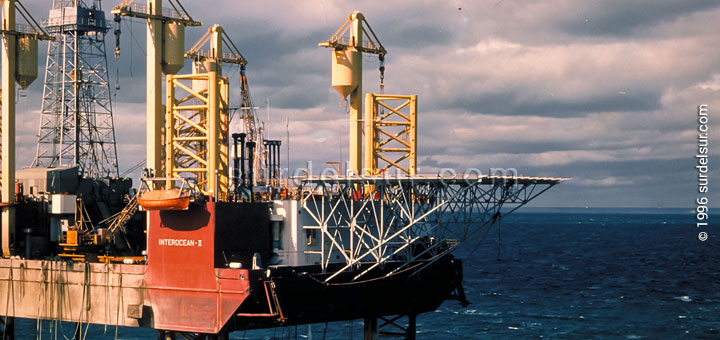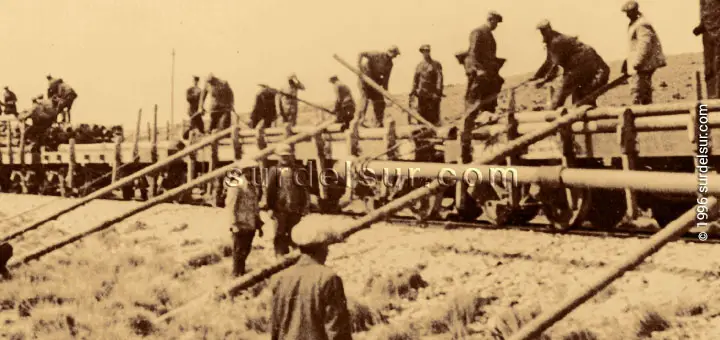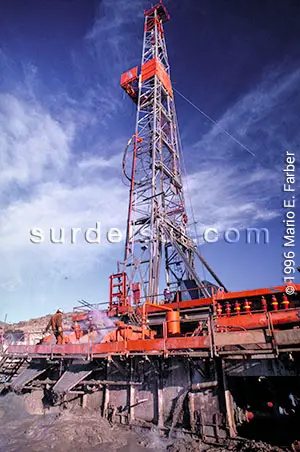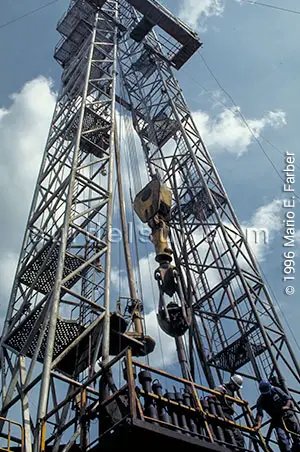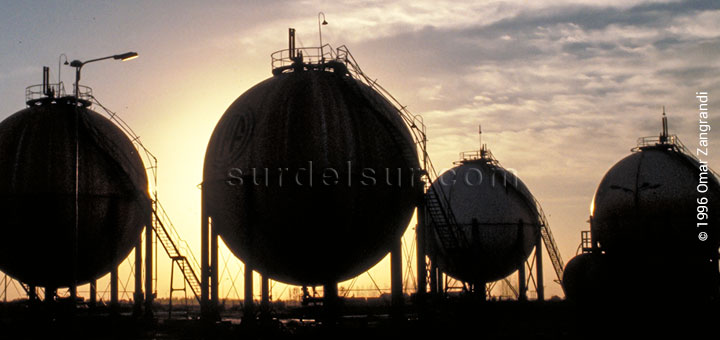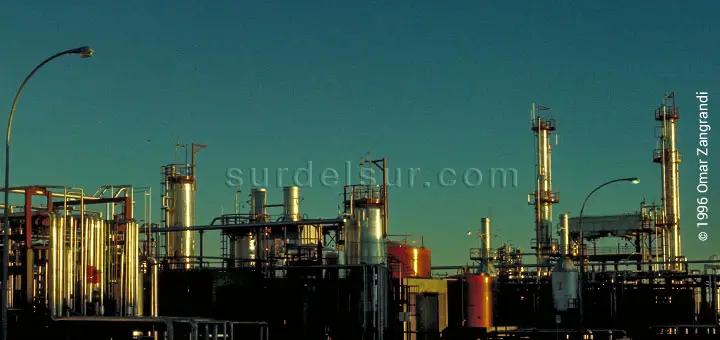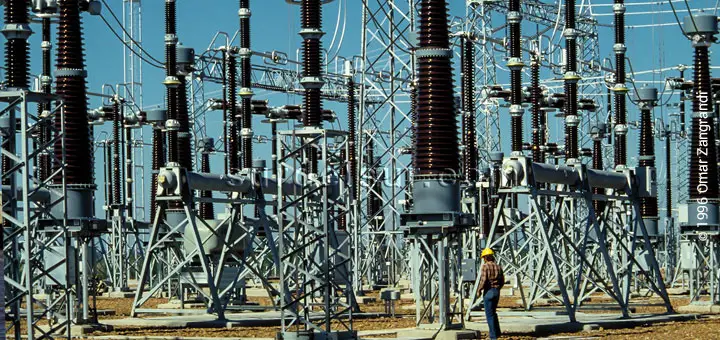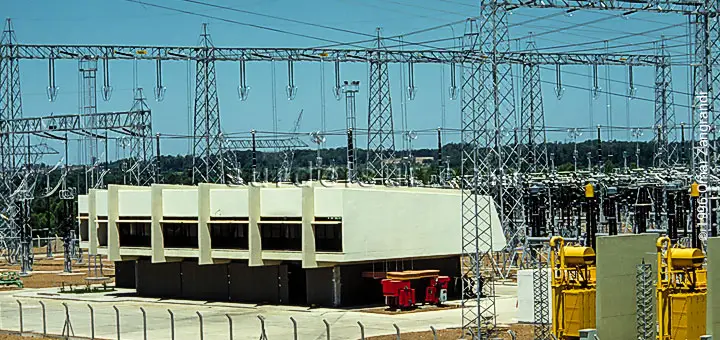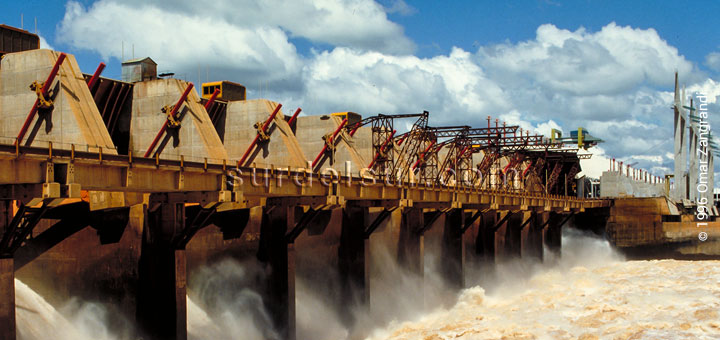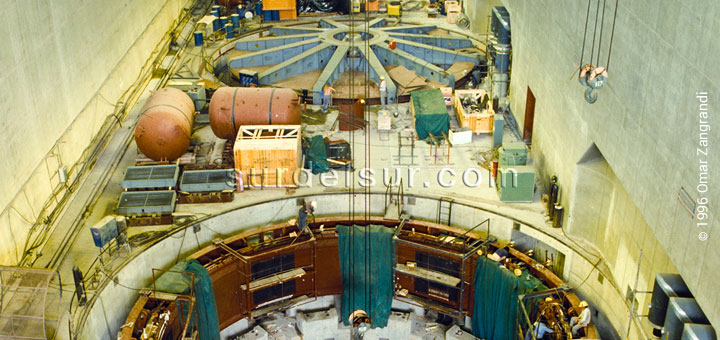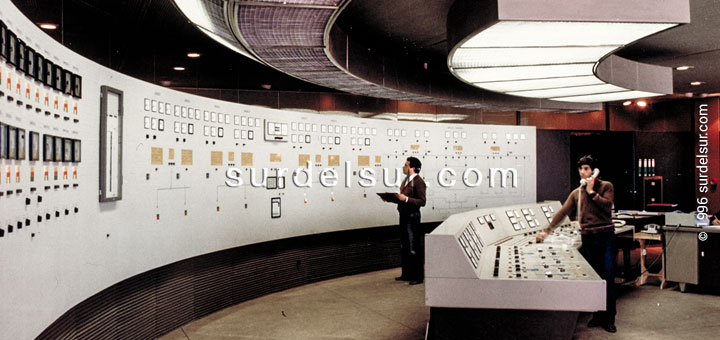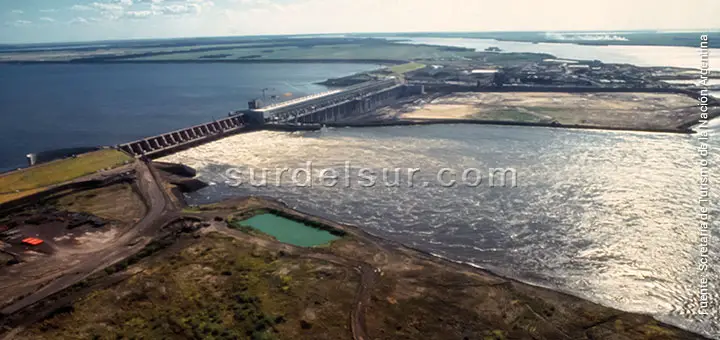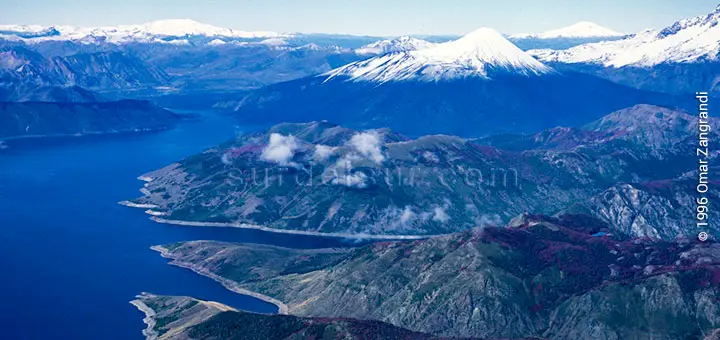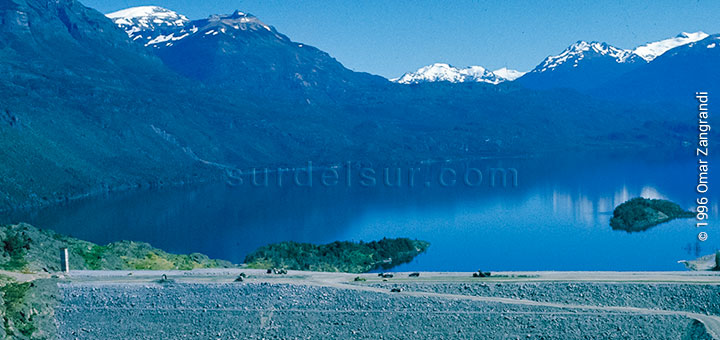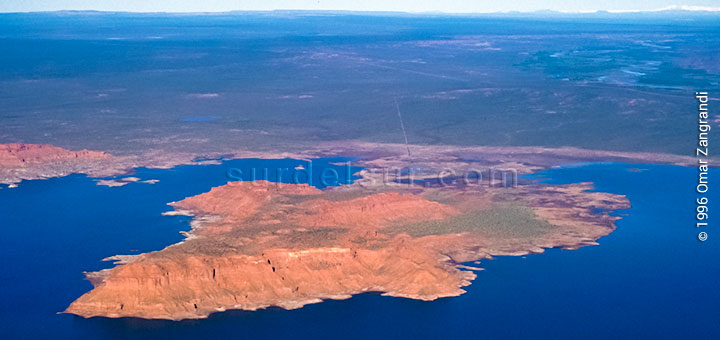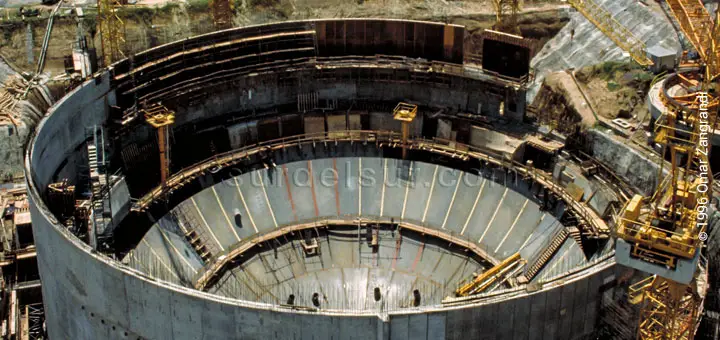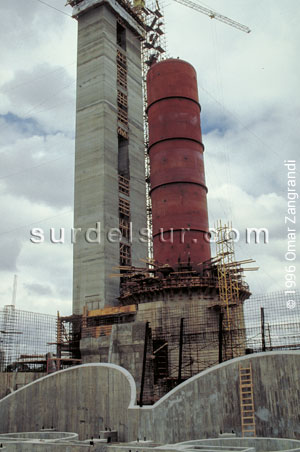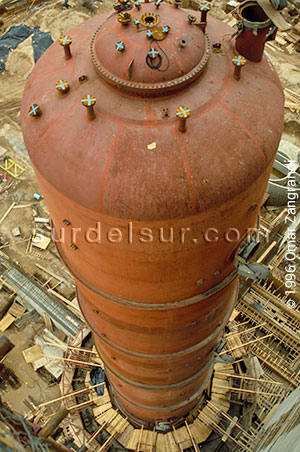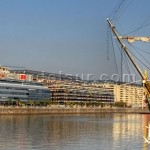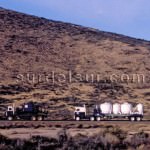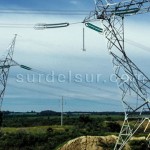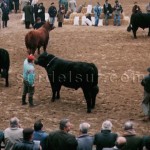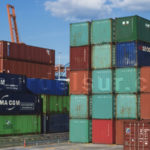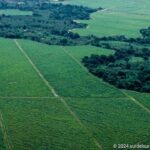The mining and power in Argentina , is closely linked to the growth of economic activities in the country.
Argentina is a country rich in mineral reserves and energy resources, which have not yet been exploited to the extent of their potential. Although, Vaca Muerta, is the second unconventional gas resource in the world, and 4th unconventional petroleum resource, Argentina should bet on the development of renewable energies. Just as the Secretariat of Environment and Sustainable Development itself, which is dependent on the Presidency of the Nation, has recognized that large-scale extractive activities generate a serious impact on the environment.
On the other hand, Argentina has great resources to develop the renewable energy sector. These energies are characterized by using resources capable of unlimited renewal. Their environmental impact is less since they do not generate pollutants. Its benefits are multiple. In principle, they encourage the diversification of the country’s energy matrix. In addition, they boost the industry, and the development of regional economies. from the country.
Mining and Power in Argentina
Mining and Power in Argentina comprises mining operations, fuel, the use of hydroelectric resources, the generation of nuclear energy and the development of renewable energies.
Mining in Argentina
Mining basically tends to the production of minerals, from the search, extraction, processing and marketing of minerals that exist in the Earth’s crust. There are metallic and non-metallic minerals. Ores are, for example, copper, iron, aluminum, manganese, lead, zinc, gold and silver, etc. There are non-metallic minerals such as asbestos, gravel and limestone; and fuels like oil and coal.
Much of the mineral deposits in Argentina are close to the Andes. Where they are located, the main mining districts in exploration and exploitation
The limitations of the domestic market; the lack of capitals for prospecting, technology and infrastructure; the distance of the main metal fields from the industrial centers, do not foster its development.
Metalliferous Minerals
Argentina is rich in deposits of metallic minerals such as gold and silver deposits in Catamarca, Jujuy, Rio Negro, San Juan, Santa Cruz; copper and molybdenum in Catamarca, San Juan and Neuquén; lead, zinc, antimony, magnesium and rhodochrosite in Catamarca; cassiterite, palladium, lead, zinc in Jujuy; uranium in Salta, Catamarca and Mendoza; iron Jujuy, Mendoza and Rio Negro; and lithium deposits in Catamarca.
In October 11, 1945 took place the first melt of Argentinian cast iron, marking the birth of the Argentina steel industry whose creation was led by General Manuel Savio, pursuing the dream to create in our country the conditions for developing heavy industry
Altos Hornos Zapla, in the town of Palpalá province of Jujuy, were created as a complex that had two mines for the extraction of raw materials and 15,000 hectares of forest for charcoal as fuel required for the process of production.
Altos Hornos Zapla (Zapla Blast Furnaces) is still in business, turned into Steel Zapla, privatized in 1999 was acquired by businessman Sergio Taselli, and produces 5,000 tons of special steel per month.
The raw material is extracted and processed in Zapla Blast Furnaces and in the Sierra Grande metal field in Río Negro.
According to the Argentine Chamber of Steel (CAA), the production of primary iron was 3,790.3 thousand tons in 2018, and the production of hot-finished laminates, during the same period, reached 4,763.4 thousand tons.
Bajo de la Alumbrera mine, Andalgalá, province of Catamarca; the company is named Minera Alumbrera; It produces copper, gold, silver and molybdenum.
Salar del Hombre Muerto, Antofagasta de la Sierra, Catamarca province on the border with Salta, at 4000 MASL. This mine produces lithium. The activities began in 1997. Brines rich in lithium are exploited by pumping. Mined does not require.
El Aguilar mine, Humahuaca, Jujuy province, produces lead and silver. In our country, Glencore International AG Group consists of the company AR Zinc SA and Minera Aguilar SA Company, in the area of metals and minerals. It is considered the main mining pole and metal refining in the country, with a production of 17,000 tons of lead silver and 73,000 tons of zinc concentrate and the most important silver mine in South America.
Veladero mine in the province of San Juan is a gold deposit It is operated by Barrick Gold. It has reserves of 11.4 million ounces and an estimated 14-year lifespan.
Pascua Lama province of San Juan, is considered one of the world’s main gold deposits . The binational project site is divided between the states of Argentina and Chile, Argentina is the Lama sector. It has proven reserves of 17.8 million ounces of gold containing 718 million ounces of silver. In January 2018, Chile’s Environment Superintendency announced the definitive closure of Barrick Gold’s Pascua Lama mine.
Cerro Vanguardia, Santa Cruz, is a holding of gold and silver deposit. The company in charge of the operation is Anglogold Ashanti. The average annual production is in the 7 tons of gold and 67 tons of silver.
Non-metallic mining
Non-metallic mining, making up the rest of industrial minerals products and application rocks. The concrete used in the construction industry, is a mixture of cement, sand, gravel and crushed stone.
Lime, gypsum, cement and its derivatives are mineral materials obtained after making various industrial treatments.
Non-metallic mining activity was developed significantly during the twentieth century. This made the Province of Buenos Aires, in full Pampa region, will become the province with the highest volume and value of mineral production in the country. Still the level of participation of mining in the national GDP has always been below 0.5%.
Fuels
The solid fuels are classified as mineral coal or fossil, liquids such as oil, and gas as natural gas.
Oil, gas and coal are the main energy sources currently in use and are not renewable. This means that reserves are consumed, they have no replacement.
The only alternative to continue the operation, is to discover new deposits. These sites generally have less resources than those are consumed and require more complex and expensive technologies for exploitation. An example of this is the offshore platforms and oil extraction at sea.
Is interesting to note, the consumption of fossil fuels, has a negative impact on the environment. Carbon dioxide, a product of combustion, is the main constituent of the greenhouse gases responsible for global warming.
Oil and Gas
In 1907 the oil production in Comodoro Rivadavia began. The sedimentary basins in Argentina have a surface of 675,678 sq. mi. (1,750,000 km2) and are situated in the North-west, Cuyo, Neuquén and Magallanes. According to statistics from the Energy Secretariat, local oil production reached 491,000 barrels per day in August 2018.
The main refineries are: La Plata, Campana, Dock Sud, San Lorenzo, Campo Durán, Plaza Huincul and Comodoro Rivadavia.
In 1949 the first gas pipeline was inaugurated. Connected the city of Comodoro Rivadavia, Chubut province, with the City of Buenos. The pipeline had a length of 1,600 km, was the first of its kind in South America, and the longest in the world at the time.
In 1960 the second gas pipeline was built. It was named it General San Martin gas pipeline, and connected Campo Duran deposits in the province of Salta, with the city of Buenos Aires. This pipeline, in turn, allowed to import gas from Bolivia.
Gas service had, for 40 years, a 40% in primary energy consumption. It became the most economical fuel used to supply the population and solve the energy problem.
Coal
Coal is produced and then used for furnace coke and power. In Argentina there are coal deposits in the provinces of Catamarca, La Rioja, San Juan, Mendoza, Neuquén, Chubut and Rio Black. But undoubtedly, the most important site that concentrates 99% of the country’s reserves, is to Rio Turbio, in the province of Santa Cruz.
In the case of Rio Turbio, the coke is not satisfactory. Coal is used to produce steam for electricity generation plants in San Nicolas, Puerto Nuevo and Bahia Blanca.
The production of coal from the site of Rio Turbio in 2013 is 450 million tons of coal. (Telam). As of 2019, Yacimientos Carboníferos de Río Turbio, estimated to produce 360,000 tons per year, to export to Chile. A great challenge considering that the mine has been inactive for the past 15 years.
Environmental impacts of mining
An important factor to consider in the development of mining, especially in the case of metals and ornamental rocks, is the highest environmental impact. The consequences of the development of mining activities are: soil deforestation, the huge consumption of water and in many cases also of wood, and air pollution.
This has provoked opposition in different communities and regions, to implementation of new mining projects and the continuation of existing mining activities.
.
Argentina’s energy matrix
According to a study carried out by CONICET and the Montevideo Group on the Energy Matrix of Argentina for the year 2015, it is indicated that the great majority of the primary energy consumed by the country in that year was non-renewable (88%) . Corresponding 51.1% to natural gas, 32.6% to oil, which are energy sources that are decreasing in Argentina. It is followed by 2.5% corresponds to nuclear energy. Lower percentage corresponds to mineral coal 1.8%. Hydroelectric power 5.4%. Finally, alternative energies participate with 6.6% in the energy matrix.
Hydroelectric Power
The rivers are a source of renewable energy that resulted in the construction of hydroelectric dams. The most important are the central of Salto Grande and Yacyretá.
La Central Hidroeléctrica Binacional de Salto Grande, is located in the northeast region of Argentina, on the Uruguay River that integrates Plata basin.
It is a dam and hydroelectric power station, with an installed capacity 1890 MW.
The Central Hidroeléctrica Binacional de Yacyretá is northeast of Argentina, on the Parana River belonging to the Plata basin, shared by Argentina and Paraguay.
Yacyretá–Apipé complex has a 3,100 MW installed capacity. According to official sources, supplies 22% of electricity demand Argentina, and generates 60% of the hydropower in the country.
The country has other minor hydroelectric complex, like:
The Chocón in the Comahue region, provinces of Neuquen and Río Negro.
The Cerros Colorados Hydroelectric Complex located in the lower reaches of the river Neuquén.
The Futaleufú Hydroelectric Complex located on the Futaleufu River, Chubut province.
Nuclear Energy
Since 1950 there was an approach to this power alternative with the establishment of the Comisión Nacional de Energía Atómica (CNEA, Nation Commission of Atomic Power).
In 1974, Atucha I atomic plant started to operate in Zárate, with a capacity of 319,000 kilowatts. It was the first in Latin America.
In 1983, the second plant, Embalse Río III, was inaugurated, with a power of 600,000 kilowatts.
Atucha II is a nuclear power plant with a capacity of 745 megawatts, whose launch took place in June 2014. In February 2015 reached 100% power of 745MW.
In 2016 Atucha I contributed 2476 Gwh, while Atucha II 5,200 Gwh.
The Sistema Interconectado Nacional
The Sistema Interconectado Nacional (National Interconnected System, SIN)
resolves the distribution of the 90% of the energy generated by thermoelectric and nuclear power plants, and Hydroelectric Complexes. SIN connects the generation of power with the consuming centers.
Renewable Energy
Argentina has excellent conditions related to its natural resources to generate alternative energy, but its development is still incipient.
Solar energy development is used for night lighting, desalting of subterranean water and electrical power in several points around the country. Eolian energy coming from wind mills are used for the extraction of subterranean waters and the lighting of whole towns.
An example of this is the Ingeniero Mario Cebreiro Wind Farm, inaugurated in May 2018, located in Blanca, Province of Buenos Aires. The wind farm will contribute some 100 megawatts to the electrical system, which will supply approximately 200,000 homes. This wind farm is one of the parks of the National Renewable Energy Plan (RenovAr).
This is an abridged version of the report on economic activities.
The full version is available only in Spanish: Minería y Energía en Argentina >>
References:
All graphic material in this report is edited digitally. The customized version by surdelsur.com shown on this page is performed based on the following documents:
- Archivo de la Nación: [Ancient Photographs] Collection of photographic material on Argentina Economic Activities (1995), Buenos Aires, Argentina
Bibliography:
- UIA: Departamento de Infraestructura
Unión Industrial Argentina. The current and future energy matrix. The challenge of Rational and Efficient Use of Energy. Ing. Alberto H. Calsiano - Mining. Ciencia y Tecnología
- Mapa Educativo Nacional – Mining Production
- Ministerio de Minería y Energía

